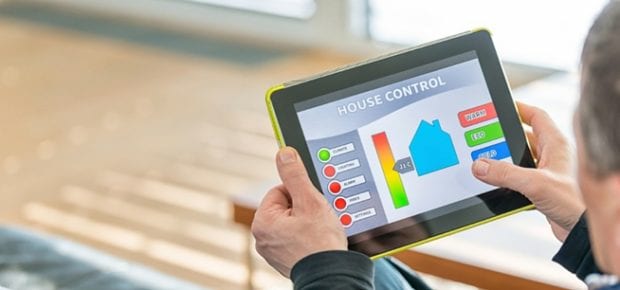May 27, 2016
IoT products are inching their way into our homes at a fast pace. Just as with any other type of consumer product, there are questions about the future of these advanced products. William Webb, IEEE Fellow and CEO of Weightless SIG, an expert on IoT, shares his insight.
IEEE Transmitter: How quickly are IoT products becoming mainstream?
WW: Slowly, as the benefits become clearer, as connectivity becomes more widespread, as chipsets become cheaper and as lessons are learned. We already have connected thermostats, security systems, lighting and a few others. We will just gradually add connectivity to more and more items.
IEEE Transmitter: Who will be creating new IoT devices?
WW: I don’t expect just one company to pioneer connectivity, instead various manufacturers of existing products will gradually add connectivity to their product lines. I would expect IoT capability to be an extra initially, over time gradually replacing the controls on the device itself and changing its functionality.
IEEE Transmitter: What types of products do you see getting the IoT treatment?
WW: Almost anything. If there is a benefit in it being connected, then it will eventually be connected. Broadly, anything that plugs into the electric mains is a strong candidate, if nothing else to monitor and control its energy usage. Anything with electronics in it, even if battery powered, is another candidate. I cannot see a reason for giving tables and chairs IoT connectivity but monitoring household plants for soil moisture is already happening.
IEEE Transmitter: How important are security concerns when it comes to more IoT products in the home?
WW: Perhaps not as important as people think. Of course we don’t want our homes “hacked” or our privacy compromised. Neither do we want to be burgled because it has become possible to open doors electronically. But equally, I don’t expect anyone to even try to hack into my fridge – what would be the gain for them?
We have had connected Nest thermostats for some time without security concerns. If someone wants to know whether the house has been unoccupied for a week or more, there are easier ways than hacking into the smart dustbin. That’s not to say we should be complacent – clearly not. And we should design everything to be as secure as possible as a matter of course. But I doubt the market for smart lighting will succeed or fail on the strength of its security.
IEEE Transmitter: How do you think IoT designs will become integrated into everyday life?
WW: In just the way smart thermostats already are integrated. With the introduction of new hardware which can be accessed via smartphones, apps will then coordinate things around us. Looking at the NEST thermostat is a good case study for how things might evolve.
IEEE Transmitter: What types of technologies do you see being used in IoT products?
WW: All sorts! On the wireless connectivity side it will likely be Bluetooth or WiFi in the home and wide-area IoT standards outside.
IEEE has created an interactive 360 degree IoT Home of the Future for you to explore our smart home predictions.






 Meaningful Momentum or Running in Place?
Meaningful Momentum or Running in Place? AI Through Our Ages
AI Through Our Ages Liquid Infrastructure: Our Planet's Most Precious Resource
Liquid Infrastructure: Our Planet's Most Precious Resource The Impact of Technology in 2025
The Impact of Technology in 2025 Quantum and AI: Safeguards or Threats to Cybersecurity?
Quantum and AI: Safeguards or Threats to Cybersecurity? Why AI Can't Live Without Us
Why AI Can't Live Without Us Bits, Bytes, Buildings and Bridges: Digital-Driven Infrastructure
Bits, Bytes, Buildings and Bridges: Digital-Driven Infrastructure Impact of Technology in 2024
Impact of Technology in 2024 Emerging AI Cybersecurity Challenges and Solutions
Emerging AI Cybersecurity Challenges and Solutions The Skies are Unlimited
The Skies are Unlimited Smart Cities 2030: How Tech is Reshaping Urbanscapes
Smart Cities 2030: How Tech is Reshaping Urbanscapes Impact of Technology 2023
Impact of Technology 2023 Cybersecurity for Life-Changing Innovations
Cybersecurity for Life-Changing Innovations Smarter Wearables Healthier Life
Smarter Wearables Healthier Life Infrastructure In Motion
Infrastructure In Motion The Impact of Tech in 2022 and Beyond
The Impact of Tech in 2022 and Beyond Cybersecurity, Technology and Protecting Our World
Cybersecurity, Technology and Protecting Our World How Technology Helps us Understand Our Health and Wellness
How Technology Helps us Understand Our Health and Wellness The Resilience of Humanity
The Resilience of Humanity Harnessing and Sustaining our Natural Resources
Harnessing and Sustaining our Natural Resources Creating Healthy Spaces Through Technology
Creating Healthy Spaces Through Technology Exceptional Infrastructure Challenges, Technology and Humanity
Exceptional Infrastructure Challenges, Technology and Humanity The Global Impact of IEEE's 802 Standards
The Global Impact of IEEE's 802 Standards Scenes of our Cyber Lives: The Security Threats and Technology Solutions Protecting Us
Scenes of our Cyber Lives: The Security Threats and Technology Solutions Protecting Us How Millennial Parents are Embracing Health and Wellness Technologies for Their Generation Alpha Kids
How Millennial Parents are Embracing Health and Wellness Technologies for Their Generation Alpha Kids Space Exploration, Technology and Our Lives
Space Exploration, Technology and Our Lives Global Innovation and the Environment
Global Innovation and the Environment How Technology, Privacy and Security are Changing Each Other (And Us)
How Technology, Privacy and Security are Changing Each Other (And Us) Find us in booth 31506, LVCC South Hall 3 and experience the Technology Moon Walk
Find us in booth 31506, LVCC South Hall 3 and experience the Technology Moon Walk Virtual and Mixed Reality
Virtual and Mixed Reality How Robots are Improving our Health
How Robots are Improving our Health IEEE Experts and the Robots They are Teaching
IEEE Experts and the Robots They are Teaching See how millennial parents around the world see AI impacting the lives of their tech-infused offspring
See how millennial parents around the world see AI impacting the lives of their tech-infused offspring Take the journey from farm to table and learn how IoT will help us reach the rising demand for food production
Take the journey from farm to table and learn how IoT will help us reach the rising demand for food production Watch technical experts discuss the latest cyber threats
Watch technical experts discuss the latest cyber threats Explore how researchers, teachers, explorers, healthcare and medical professionals use immersive technologies
Explore how researchers, teachers, explorers, healthcare and medical professionals use immersive technologies Follow the timeline to see how Generation AI will be impacted by technology
Follow the timeline to see how Generation AI will be impacted by technology Learn how your IoT data can be used by experiencing a day in a connected life
Learn how your IoT data can be used by experiencing a day in a connected life Listen to technical experts discuss the biggest security threats today
Listen to technical experts discuss the biggest security threats today See how tech has influenced and evolved with the Games
See how tech has influenced and evolved with the Games Enter our virtual home to explore the IoT (Internet of Things) technologies
Enter our virtual home to explore the IoT (Internet of Things) technologies Explore an interactive map showcasing exciting innovations in robotics
Explore an interactive map showcasing exciting innovations in robotics Interactively explore A.I. in recent Hollywood movies
Interactively explore A.I. in recent Hollywood movies Get immersed in technologies that will improve patients' lives
Get immersed in technologies that will improve patients' lives